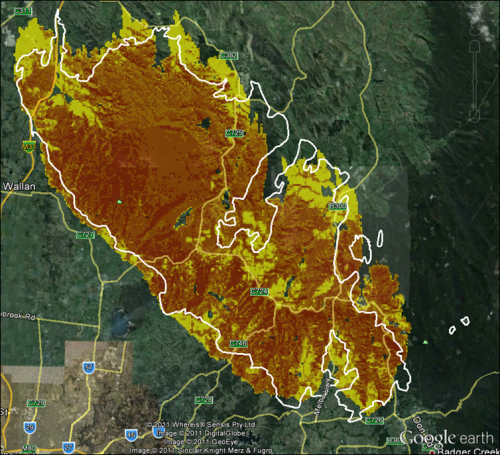Lessons from Black Saturday: Improving predictions of extreme fires

University of Melbourne researchers have used the devastating 2009 Black Saturday bushfires to improve the PHOENIX Rapidfire fire behaviour model to better assist fire fighting efforts in the current fire season.
PHOENIX simulates the progress of a fire across the landscape, providing an indication of intensity, flame height, ember density and heat release. By processing fuel information, topography, weather forecasts and expected firefighting effort it can generate maps predicting fire characteristics and progression.
Fire predictions can help identify the potential threat to homes and buildings and indicate the likely arrival times of fire. Rapid predictions can help provide more timely warnings to communities, aid evacuation planning and help guide firefighting efforts
Previously, fire predictions were performed manually - maps had to be plotted by hand, which was challenging and time-consuming during multiple fast moving fires. However with the improvements to Phoenix, large fires, such as those on Black Saturday, can be simulated in under four minutes on a desktop PC.
Early versions of PHOENIX relied on a fire prediction system that was based on observations of small experimental fires. However Dr Thomas Duff, from the Melbourne School of Land and Environment said while useful under mild conditions, the model was less accurate for fires under extreme weather conditions.
Conducting experimental fires under extreme conditions is not an option, so we are now using observations of bushfires such as Black Saturday, to better understand how fires spread," he said.
Observations from Black Saturday helped us develop a new 'convection and spotting' module inside PHOENIX. Fire convection is the rising of fire-heated air; this contributes to the transport of windblown embers that result in spotfires downwind of the main fire, sometimes kilometres ahead."
Under extreme conditions, the process of spotting greatly accelerates the spread of the fire and it is important to recognise this. To learn from bushfires, we have developed new methods for comparing our predictions with reality. PHOENIX can now be calibrated against bushfires to improve results."
PHOENIX is being developed by Dr Duff and Mr Derek Chong, under the leadership of Dr Kevin Tolhurst from the Melbourne School of Land and Environment, at the University of Melbourne.
Provided by University of Melbourne

















